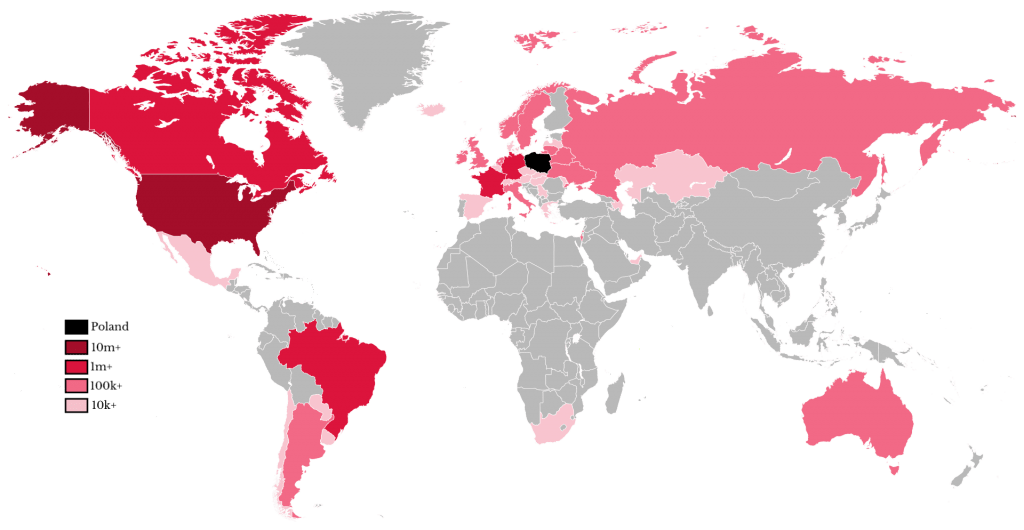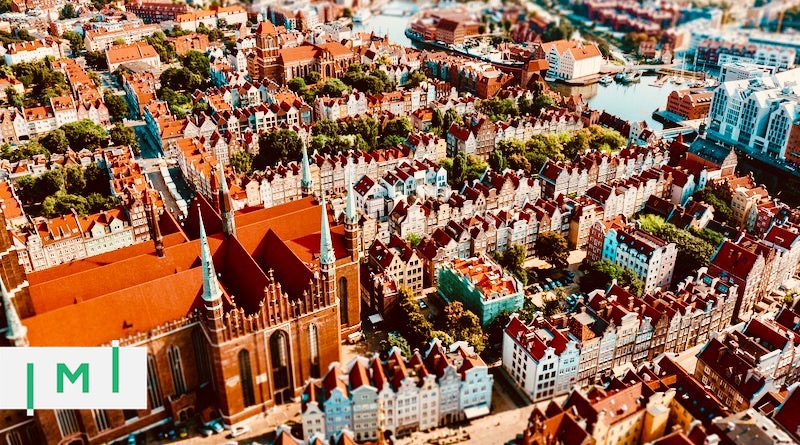10 Million Polish-Americans Potentially Eligible for EU Citizenship by Descent
We have argued before in IMI that investment migration specialists who ignore citizenship by descent are missing a great opportunity to assist an enormous share of their clients. Globally, a nine-digit number of individuals are potentially eligible. One of the largest subgroups in this category is people of Polish ancestry, the subject of this article.
Poland offers citizenship by descent to those who can demonstrate they have ancestors who were Polish citizens at or after the founding of the Second Polish Republic in 1919 (certain additional conditions apply – see below).
Polish citizens today, by virtue of the country’s EU membership, not only enjoy freedom of movement throughout the EU and EEA countries but also the right to settle and permanently reside in any of the 27 member countries. These factors, among others, make Polish citizenship one of the most valuable in the world.
How many people potentially qualify for Polish citizenship by descent?
Though estimates vary widely, depending on how Polish ancestry is defined, the Polish diaspora is among the world’s largest, numbering at least 20 million people globally.

In 2020, for example, according to the US Census Bureau, some 9.2 million Americans self-identified as Polish-American. But not all Americans of Polish descent are necessarily aware of their origins. The Polish American Cultural Center estimates that the number of Americans with some polish heritage is between 19 and 20 million. In the 2000 census, nearly 700,000 Americans over five years old reported speaking mainly Polish at home.
Americans of Polish ancestry are heavily concentrated in the states around Lake Michigan – Wisconsin, Michigan, Illinois – as well as the Northeastern states of Pennsylvania, New Jersey, and Massachusetts.

Other non-EU countries with large estimated Polish-origin populations include Brazil (about 3 million), Canada (1.1m), Argentina (500,000), Belarus (400,000), Russia (300,000), Australia (200,000), and Ukraine (150,000).
Of course, not all members of the international Polish diaspora will be eligible for Polish citizenship by descent. Many will have Polish ancestors that left the territory of what is now Poland before the founding of the Second Polish Republic in 1919. Other members of the diaspora already hold Polish citizenship. But there are at least several million Polish descendants (likely more than 10 million) who right now are eligible for EU citizenship through their Polish grandparents, great-grandparents, or even more distant relatives.
How to qualify for Polish citizenship by descent

David Lesperance of Lesperance & Associates, a Canadian immigration and tax attorney who is himself based in Poland, explains the steps to qualify for Polish citizenship by descent.
“The first stage,” says Lesperance, “is to determine if someone may be entitled to Polish citizenship.”
To be potentially eligible, he explains, the individual must have at least one ancestor who meets the following conditions:
- Was a Polish citizen on February 20, 1919 (formation of Second Polish Republic) or later;
- Left Poland after February 20, 1919;
- Did not immigrate to the Soviet Union (formed on December 28, 1922);
- If the Polish ancestor was/is male, he did not serve in the military of an Axis power;
- If the Polish ancestor was/is a female, the birth of her successor (whether female or male) must have been after February 1952
“If there are still gaps in the family history and the individual does not know if these criteria have been met,” continues Lesperance, “we recommend a professional genealogist be retained.”
Once the descendant has confirmed that the Polish ancestor meets the criteria, he or she must gather the supporting documentation necessary to demonstrate the same to the satisfaction of the Polish government.
What types of documentation are considered?
There are many ways to demonstrate Polish ancestry. Types of documentation that may be taken into consideration include, but are not limited to:
- Old passports;
- Birth certificates;
- Marriage certificates;
- Genealogical evidence;
- National population registry records;
- Ship manifests;
- Ellis Island records;
- Church records;
- Etc.
Think you may qualify for EU citizenship by descent?
Ask a specialist
Other articles about EU citizenship by descent
- Even for The Super-Rich, Citizenship by Descent is Extremely Useful: Lessons From Abramovich
- Everything You Need to Know About Latvian Citizenship by Descent
- The Complete List of EU Citizenship by Ancestry/Descent Policies
- Bulgaria Grants EU Citizenship by Descent Up to 3rd Generation: Hundreds of Thousands Qualify
- Czechia: Hidden Citizenship-by-Descent Gem? New Data Suggests So
- Slovakia to Grant Citizenship by Descent up to 3rd Generation: 800,000 Americans Could Qualify
Christian Henrik Nesheim is the founder and editor of Investment Migration Insider, the #1 magazine – online or offline – for residency and citizenship by investment. He is an internationally recognized expert, speaker, documentary producer, and writer on the subject of investment migration, whose work is cited in the Economist, Bloomberg, Fortune, Forbes, Newsweek, and Business Insider. Norwegian by birth, Christian has spent the last 16 years in the United States, China, Spain, and Portugal.



